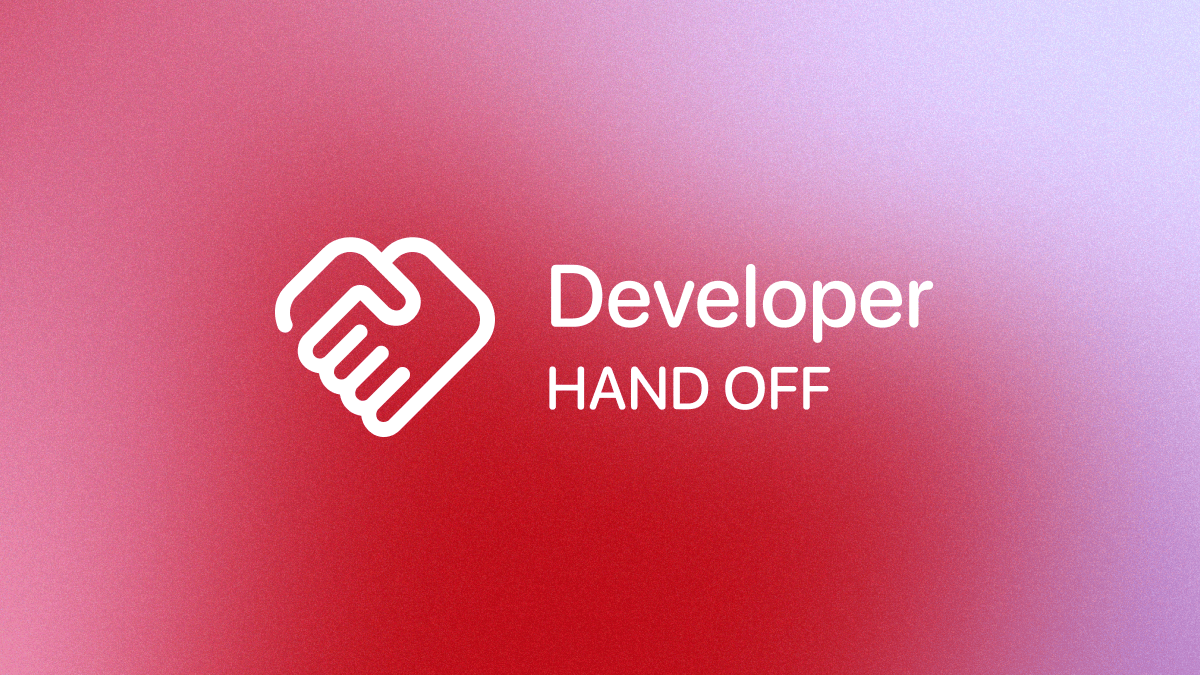The designer-to-developer hand-off is a critical step that ensures the vision behind a design translates smoothly into a functional product. Over my years as a UI/UX designer, I’ve developed a comprehensive approach to make this process as seamless as possible. Here, I’ll share how I handle the hand-off and the best practices I’ve found invaluable.
Involve Developers Early
Designers and developers working in silos can lead to misunderstandings and technical constraints surfacing too late. To mitigate this, I involve developers during the early design stages to get feedback on feasibility.
Best Practice:
Collaborate in design meetings to discuss potential challenges and align on technical capabilities before the design is set in stone.
Use Consistent Design Systems
A well-structured design system speeds up the development process and ensures a consistent user experience. Developers can refer to pre-established components without having to question the design’s logic.
Best Practice:
- Maintain a comprehensive design system in Figma or similar tools that include reusable components, color palettes, typography, and spacing guidelines.
- Document component behavior and interactions so developers know exactly how each element should function.
Create Interactive Prototypes
Static screens are great, but nothing beats an interactive prototype for showing how the design flows. This helps developers understand user interactions and the expected transitions between states.
Best Practice:
- Use tools like Figma’s prototyping feature or Adobe XD to link your screens and demonstrate animations, hover states, and other interactions.
- Include detailed notes for more complex interactions to avoid ambiguity.
Detailed Design Specs
Precise specifications reduce back-and-forth communication, saving time and effort for both teams. This is where tools with automatic spec generation shine.
Best Practice:
- Leverage tools such as Figma Inspect or Zeplin to share pixel-perfect specs with developers.
- Specify design tokens like color codes, padding, font sizes, and breakpoints to ensure consistency across different screen sizes.
Organize Files Clearly
Well-structured files allow developers to find the assets and designs they need quickly, preventing delays or confusion.
Best Practice:
- Create organized layers, artboards, and use naming conventions that make sense. For example, use a hierarchy like component/button/primary for easy navigation.
- Group and label design versions for reference, especially during iterative updates.
Communicate Through Annotated Notes
Annotations clarify the purpose of each design decision and help explain micro-interactions or specific UX considerations that might not be obvious from the visual alone.
Best Practice:
- Add sticky notes or comment boxes in your design tool to highlight unique behaviors or edge cases.
- Create a dedicated design hand-off document summarizing the most critical points for developers to reference.
Regular Check-Ins and Open Feedback Loop
Even with the most thorough hand-off, questions will come up. Maintaining an open line of communication ensures that developers can clarify doubts and that adjustments are made quickly.
Best Practice:
- Schedule regular check-ins during the initial stages of development to answer questions and verify implementation.
- Be available for quick chats or feedback rounds to keep things moving smoothly.
User Testing Post-Development
After the design has been developed, conducting user testing can highlight discrepancies between the intended design and the final product.
Best Practice:
- Collaborate with the team for a post-development review where you test the developed product side by side with the original design.
- Take note of any tweaks needed for future hand-offs.
Final Thoughts
The designer-to-developer hand-off can either be a bottleneck or a bridge to an efficient development cycle. By following these best practices—early collaboration, clear documentation, interactive prototypes, and ongoing communication—you can create a process that enhances both teams’ productivity and leads to a polished end product.


